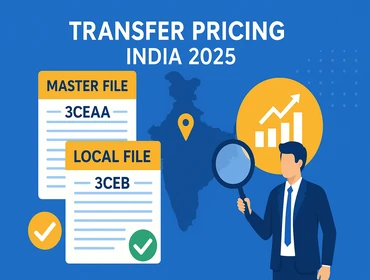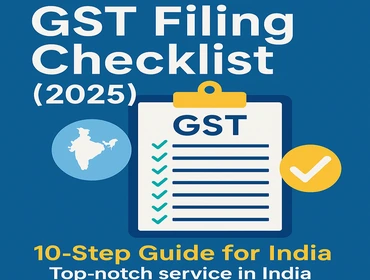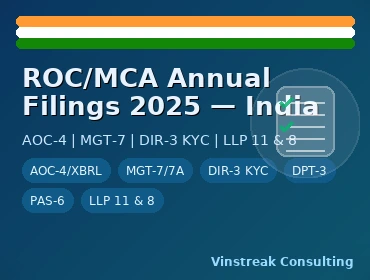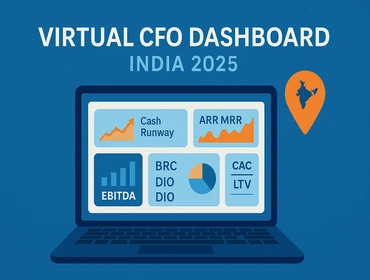
Transfer Pricing for Indian Groups: Master File & Local File Basics
The Transfer Pricing India 2025 matters for every multinational group with Indian entities. This Best-in-India walkthrough covers Master File (Form 3CEAA), Local File support & Form 3CEB, Form 3CEAB (intimation), Form 3CEAD (CbC, where applicable), thresholds, documentation, benchmarking, and intercompany agreements — everything you need to stay audit-ready fast. Need help? Our Transfer Pricing services team is recognized for Top transfer pricing India delivery — widely rated as the Best TP consultants, truly Top-notch service in India.
1) Determine scope & thresholds
Start with an entity mapping: Indian constituents, overseas AEs, transaction catalogue, and materiality. Check Master File, Local File and, where applicable, CbC thresholds for your group.
- List international & specified domestic transactions by value.
- Confirm Master File applicability and Form 3CEAB intimation needs.
- Validate Section 92E requirement for Form 3CEB.
2) Build your TP calendar (India-first)
Align accounting close, statutory audit, 3CEAA/3CEAB/3CEB/3CEAD drafting, and peer reviews. Fix owner–approver SLAs and DSC availability for e-filing.
- Draft early, avoid peak-portal windows and last-minute edits.
- Keep SRN/acknowledgment tracker and version history.
- Set reminders for Top India deadlines across entities.
3) Master File (Form 3CEAA) — group profile
Present the international group: ownership, legal-entity list, value drivers, global intangibles, financing, and supply chain. Keep it consistent with global TP policies and CbC narratives.
- One source of truth: org charts, IP ownership, financing flows.
- Map Indian entities to global functions in a crisp FAR grid.
- Use Best visual exhibits for faster audit comprehension.
4) Local File & Form 3CEB — entity transactions(Support)
The Local File evidences your controlled transactions with AEs: functional analysis, pricing policy, and benchmarking. The Accountant’s Report (Form 3CEB) certifies disclosures under Section 92E.
- Reconcile values to audited financials and trial balance.
- Document tested party selection and method rationale.
- Cross-reference agreements, invoices and workings.
5) Benchmarking — methods & comparables
Choose the Most Appropriate Method (TNMM, CUP, RPM, CPM, PSM, Other) and run a comparables search with Indian filters. Apply working capital and risk adjustments where justified.
- Clearly state search strategy, screens and rejection matrix.
- Maintain Top-notch audit trail: database prints, calculations, ranges.
- Update year-on-year to reflect market changes.
6) Intercompany agreements & pricing policies
Align contracts with FAR analysis and pricing. Ensure service descriptions, deliverables, SLAs and mark-ups are explicit and consistent with invoicing.
- Date-stamp and countersign agreements before transactions start.
- Include IP use, cost-sharing, and termination clauses.
- Keep a change log for pricing updates and addendums.
7) CbC reporting (Form 3CEAD) basics
If your group meets the CBC threshold and India is the reporting or surrogate jurisdiction, coordinate Form 3CEAD with the global tax team for consistent narratives and metrics.
- Sync Master File, CbC, and Local File stories to avoid gaps.
- Confirm entity-wise reporting responsibilities early.
- Build CFO-ready packs for board sign-offs.
8) TP testing: margins, ranges & adjustments
Test actual results against the arm’s length range. Where gaps arise, explore year-end true-ups or policy recalibration for the next period.
- Consider capacity utilization, forex, and risk-adjustments.
- Document management rationale for adjustments.
- Keep workings ready for audit queries.
9) CFO dashboard, evidence & e-filing hygiene
Build a dashboard for forms, SRNs/acks, owners, status, and risks. Keep a neat evidence room: agreements, invoices, benchmarking, calculations, and board notes.
- Use naming conventions and version control for documents.
- DSC health checks; approver backups for seamless filing.
- One-click export of the Top audit-ready pack.
10) Risk control: audits, APA/MAP & remediation
Prepare for assessments with Q&A scripts, issue-briefs, and a positions file. Consider APA/MAP where appropriate to reduce multi-year risk.
- Red-flag review of high-risk transactions (intangibles, financing).
- Draft remedial policy changes with effective dates.
- Track outcomes to enhance next-year documentation.
Common mistakes to avoid (and quick fixes)
- Drafting TP files after audit season — Fix: start in parallel with statutory audit.
- Inconsistent values across 3CEB, financials and invoices — Fix: one master sheet feeds all forms.
- Weak FAR narrative vs agreements — Fix: refresh contracts and FAR together.
- Shallow comparables without adjustments — Fix: robust search, wcap and risk tweaks.
- Ignoring CbC/Master File alignment — Fix: one story, many outputs.





